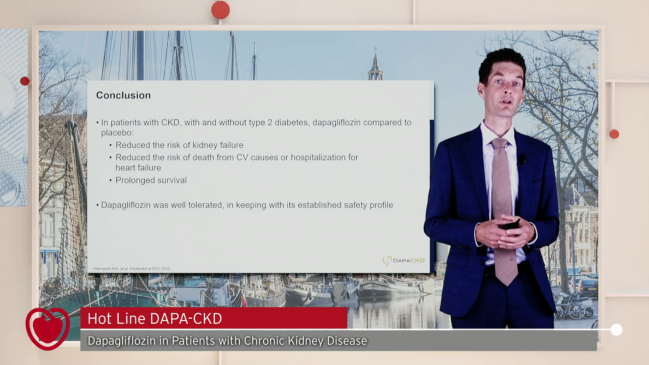AHA’s 2020 Top 10: ISCHEMIA, HCM, Early A-fib Intervention, and More
COVID-19 makes the list, but research advances across the spectrum of CVD are represented in this annual tradition.

The American Heart Association has released its annual top 10 list for leading cardiovascular-related research and “accomplishments” for 2020, offering the caveat that much of it took place in the shadow of COVID-19. The AHA has been compiling this list since 1996, a press release notes.
1) EXPLORER-HCM. Released at the virtual European Society of Cardiology (ESC) Congress 2020, this small trial in the setting of hypertrophic cardiomyopathy (just 251 patients) showed that the first-in-class myosin inhibitor mavacamten (MyoKardia), on top of medical therapy, significantly improved hemodynamics, functional capacity, and symptoms when compared with patients who received placebo. “A new molecule has emerged with a promise of targeted medical therapy for obstructive hypertrophic cardiomyopathy for the first time since the original description of the disease almost 60 years ago,” said lead investigator Iacopo Olivotto, MD (Azienda Ospedaliera-Universitaria Careggi, Florence, Italy).
 2) ISCHEMIA. First released at the AHA’s 2019 Scientific Sessions, the publication of ISCHEMIA and ISCHEMIA-CKD (in the form of four papers and an editorial in the New England Journal of Medicine) took place during the American College of Cardiology’s virtual meeting in March. ISCHEMIA showed that in patients with stable coronary disease who had moderate or severe ischemia on stress testing, an initial invasive strategy, as compared with an initial conservative strategy, did not reduce the rates of the primary or key secondary composite outcomes. Procedural infarctions (more common in the invasive group) and nonprocedural infarctions (more common in the conservative group) have continued to spark debate, given larger questions being raised about MI definitions in clinical trials. So, too, have questions about what changes the cardiology community has made in response to the results, and how guidelines and care might shift.
2) ISCHEMIA. First released at the AHA’s 2019 Scientific Sessions, the publication of ISCHEMIA and ISCHEMIA-CKD (in the form of four papers and an editorial in the New England Journal of Medicine) took place during the American College of Cardiology’s virtual meeting in March. ISCHEMIA showed that in patients with stable coronary disease who had moderate or severe ischemia on stress testing, an initial invasive strategy, as compared with an initial conservative strategy, did not reduce the rates of the primary or key secondary composite outcomes. Procedural infarctions (more common in the invasive group) and nonprocedural infarctions (more common in the conservative group) have continued to spark debate, given larger questions being raised about MI definitions in clinical trials. So, too, have questions about what changes the cardiology community has made in response to the results, and how guidelines and care might shift.
3) EAST-AFNET 4 and EARLY-AF, presented at the ESC and AHA virtual meetings, respectively, took third place, with both trials validating a role for intervening earlier in atrial fibrillation, either with antiarrhythmic drugs or ablation. Comments from the EAST-AFNET 4 primary investigator at ESC sum up both trials. “I think that these results will inform the future use of rhythm-control therapy in patients with AF,” Paulus Kirchhof, MD (University Heart and Vascular Center, Hamburg, Germany, and the University of Birmingham, England), told reporters at an online press briefing. “They suggest that early rhythm-control therapy should be offered to all patients with early AF at risk of cardiovascular complications.”
4) The AHA gave the fourth spot to the growing problem of hypertension in the United States, noting that studies published in 2020 “highlight the threat of high blood pressure in pregnancies, a broader struggle to control the condition, and gaps in scientists' understanding of its underpinnings.” Several studies shone a spotlight on the issue in 2020, including a nationwide study based on National Health and Nutrition Examination Survey (NHANES) data showing a disconcerting drop in hypertension control.
 5) SGLT2 inhibitors made headlines at many of the big cardiovascular meetings in 2020; the AHA called out studies showing not only that these agents are making the transition from diabetes to heart failure—as in EMPEROR-Reduced, with empagliflozin (Jardiance; Boehringer Ingelheim/Eli Lilly)—but also that they are effective in chronic kidney disease: witness dapagliflozin (Farxiga; AstraZeneca) in DAPA-CKD. Released at the AHA 2020 meeting, SOLOIST-WHF and SCORED showed that the latest drug in this class, sotagliflozin (Zynquista; Sanofi Aventis/Lexicon), reduced the risk of hospitalizations for heart failure in diabetic patients with chronic kidney disease and decompensated HF, respectively, and this benefit was largely evident after just a few months.
5) SGLT2 inhibitors made headlines at many of the big cardiovascular meetings in 2020; the AHA called out studies showing not only that these agents are making the transition from diabetes to heart failure—as in EMPEROR-Reduced, with empagliflozin (Jardiance; Boehringer Ingelheim/Eli Lilly)—but also that they are effective in chronic kidney disease: witness dapagliflozin (Farxiga; AstraZeneca) in DAPA-CKD. Released at the AHA 2020 meeting, SOLOIST-WHF and SCORED showed that the latest drug in this class, sotagliflozin (Zynquista; Sanofi Aventis/Lexicon), reduced the risk of hospitalizations for heart failure in diabetic patients with chronic kidney disease and decompensated HF, respectively, and this benefit was largely evident after just a few months.
6) Novel drugs for controlling “troublesome cholesterol levels” studied in a range of trials were sixth on the AHA’s list. ORION-10 and ORION-11 were published along with ORION-9 in the New England Journal of Medicine earlier this year, following their presentation at the AHA 2019 and ESC 2019 meetings, respectively. As reported by TCTMD, inclisiran, a twice-yearly small interfering RNA (siRNA), was originally developed by The Medicines Company, which was subsequently bought by Novartis. Just last week, European regulators approved the agent for use in combination with a statin for lowering LDL cholesterol levels in patients with hypercholesterolemia or mixed dyslipidemia.
The hepatocyte-directed antisense oligonucleotide AKCEA-APO(a)-LRx, also gets a shout-out in the treatment of elevated cholesterol levels. Results for the small, randomized, controlled, dose-ranging study for this agent, which targets elevated lipoprotein(a) levels, were first presented at AHA 2018, then published in January 2020 in NEJM.
 7) Stroke prevention and treatment made the list with ROADSTER 2, addressing transcarotid artery revascularization (TCAR) for carotid stenosis—a concept explored by TCTMD in a feature story at the very beginning of the year. Also mentioned: THALES, published in the New England Journal of Medicine during the summer after top-line data were released back in January. Those results, showing a benefit of ticagrelor (Brilinta; AstraZeneca) in stroke, led to the FDA adding a stroke prevention indication for ticagrelor last month. Lastly, the AHA calls out the Treat Stroke to Target trial, first presented at AHA 2019 but published in NEJM this year. That trial showed that prescribing statins to achieve a more aggressive LDL treatment target in patients who have had a TIA or ischemic stroke of atherosclerotic origins reduces the risk of major cardiovascular events.
7) Stroke prevention and treatment made the list with ROADSTER 2, addressing transcarotid artery revascularization (TCAR) for carotid stenosis—a concept explored by TCTMD in a feature story at the very beginning of the year. Also mentioned: THALES, published in the New England Journal of Medicine during the summer after top-line data were released back in January. Those results, showing a benefit of ticagrelor (Brilinta; AstraZeneca) in stroke, led to the FDA adding a stroke prevention indication for ticagrelor last month. Lastly, the AHA calls out the Treat Stroke to Target trial, first presented at AHA 2019 but published in NEJM this year. That trial showed that prescribing statins to achieve a more aggressive LDL treatment target in patients who have had a TIA or ischemic stroke of atherosclerotic origins reduces the risk of major cardiovascular events.
8) Movement matters, and studies proving this made the AHA’s list. The first, an analysis of daily step count and step intensity, showed that taking more steps was associated with reduced all-cause mortality, with a significant association between step intensity and better health. The other, published in Circulation Research, draws a line between habitual physical activity, as measured on a smartwatch, and reduced cardiovascular risk.
9) The AHA gave the penultimate spot to COVID-19 and, in particular, the fast-unfolding science around the use of ACE inhibitors and ARBs and whether these agents “might leave patients more vulnerable to the virus—or, alternately, might help protect them from its ravages,” a press release notes. TCTMD’s coverage of this thorny topic has repeatedly made our own monthly top 10 lists in 2020, including a large study out of China also highlighted in the AHA’s list. The science coming out of the AHA’s own COVID-19 CVD registry also shares the spotlight, including research looking at the disproportionate impact of the virus on Blacks and Hispanics in the United States, as well as the risk posed by obesity. Both analyses were presented during AHA 2020 along with a paper exploring the poor prognosis of COVID-19 patients who also have underlying cardiovascular diseases.
 10) Last but not least, the AHA highlights the fact that for all the attention SARS-CoV-2 has received this year, influenza still matters. Published in the Annals of Internal Medicine and reported by TCTMD, a study of 80,000 patients suggests that one in eight US adults hospitalized with influenza experience an acute CV event, most commonly heart failure and ischemic heart disease. Also singled out by the AHA was INVESTED, reported at AHA 2020, which found that using a high- versus standard-dose influenza vaccine does not reduce deaths or cardiopulmonary hospitalizations among patients with a recent MI or heart failure hospitalization.
10) Last but not least, the AHA highlights the fact that for all the attention SARS-CoV-2 has received this year, influenza still matters. Published in the Annals of Internal Medicine and reported by TCTMD, a study of 80,000 patients suggests that one in eight US adults hospitalized with influenza experience an acute CV event, most commonly heart failure and ischemic heart disease. Also singled out by the AHA was INVESTED, reported at AHA 2020, which found that using a high- versus standard-dose influenza vaccine does not reduce deaths or cardiopulmonary hospitalizations among patients with a recent MI or heart failure hospitalization.
“For an older individual, it still may be worth getting a higher-dose vaccine to prevent flu,” said Orly Vardeny, PharmD (University of Minnesota and Minneapolis VA Health Care System, MN), during the AHA meeting. “But what our study showed is that these outcomes were not differentially prevented with the high-dose vaccine compared with standard-dose vaccine.”
Shelley Wood was the Editor-in-Chief of TCTMD and the Editorial Director at the Cardiovascular Research Foundation (CRF) from October 2015…
Read Full BioSources
American Heart Association. AHA names top heart disease and stroke research advances of 2020. Published on: December 14, 2020. Accessed on: December 18, 2020.


Comments